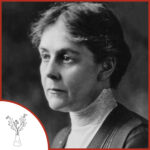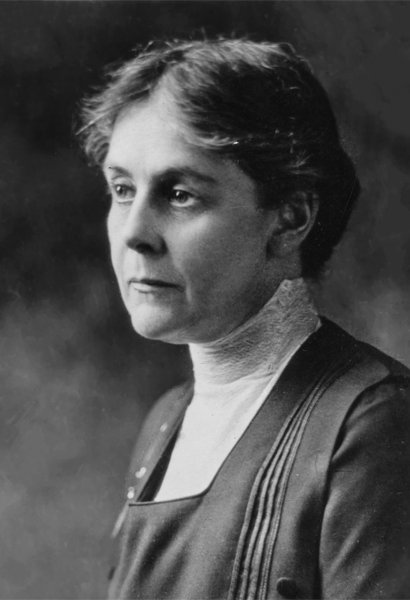

Birth: February 27, 1869
Death: September 22, 1970
Specialty: Medicine
Major Contributions:
First woman faculty at Harvard University
Expert in occupational health
Time Woman of the Year in 1956
Born in New York in 1869, Alice Hamilton was raised in Indiana in a somewhat isolated manner including not going to public school but receiving a very limited education at home mostly rooted in languages and literature. In her teens, Hamilton decided to become a doctor. In her autobiography, she offered an explanation for her choice: “I chose medicine,” she wrote, “not because I was scientifically-minded, for I was deeply ignorant of science. I chose it because as a doctor I could go anywhere I pleased — to far-off lands or to city slums — and be quite sure I could be of use anywhere.”
She enrolled in medical school at the University of Michigan in 1892. Soon after, she went to Germany with her sister Edith. She intended to study bacteriology and pathology, but German universities did not admit women. They eventually gained permission to attend classes at universities in Munich and Leipzig so long as they remained “invisible” to the male students.
Hamilton returned to the United States in 1896 and enrolled at Johns Hopkins University Medical School. Then she landed a job teaching pathology at the Women’s Medical School of Northwestern University in Chicago.
In Chicago, Hamilton became a resident of Hull House – a settlement house designed to provide social services to the community. She studied typhoid and tuberculosis in the surrounding communities and treated poor immigrants for diseases that often resulted from working conditions. In 1910, Hamilton studied the extent of industrial sickness in Illinois, particularly the high mortality rates in the lead and enamelware industries, rubber production, painting trades, and explosives and munitions. Hamilton was later asked by the Commissioner of Labor in the U.S. Department of Commerce to undertake a similar survey covering all the states.
Over the years, Hamilton’s many reports for the federal government dramatized the high mortality rates for workers in dangerous trades and brought about many changes at state and federal levels.
Hamilton died on September 22, 1970, at the age of 101. Three months later, Congress passed the Occupational Safety and Health Act in an effort to help improve workplace safety in the US.
Written by Nicole Hutchison
Sources:
Alice Hamilton and the Development of Occupational Medicine
Alice Hamilton: Pioneer Occupational Epidemiologist (Epidemiology)
See Also:
